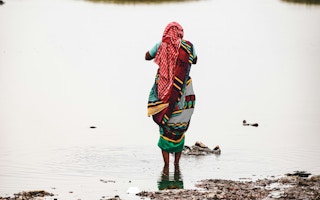Future of 1 billion people in South Asia hinges on water pact
Published on by Water Network Research, Official research team of The Water Network in Case Studies
 About 114 million people depend on the Brahmaputra River basin for water, electricity, food, agriculture and fishing: 58 million in Bangladesh, 39 million India, 16 million in China and 700,000 in Bhutan.
About 114 million people depend on the Brahmaputra River basin for water, electricity, food, agriculture and fishing: 58 million in Bangladesh, 39 million India, 16 million in China and 700,000 in Bhutan.
Image: Sachin Singh, CC BY-SA
Better collaboration is urgently needed to mitigate the impacts of climate change on three key river basins in South Asia – the Brahmaputra, Indus and Ganges – according to new analysis.
The three rivers provide food and water security to nearly a billion people in some of Asia’s most vulnerable communities, as well as underpinning industry and industrial policies in one of the most densely populous and geopolitically sensitive zones in the world.

South Asia ‘sorely needs transboundary river accord’
In a series of reports, scientists call for joint action to tackle what they see as a lack of planning, research, cooperation and data sharing in these basins, highlighting growing pressures on water resources in the Hindu Kush Himalaya region from population growth and rising temperatures.
The reports, released by the International Centre for Integrated Mountain Development and the Australian Water Partnership on March 20 in Kathmandu, stress that collaboration among riparian countries (nations along bodies of water) is vital for sustainable energy strategies, water security, and disaster resilience.
They warn that the current approaches raise the risk of destabilisation and crisis.
Russell Rollason, lead author of the Indus report, said: “For too long, water security has been cast as a zero-sum game, but as this research shows it is possible for countries and stakeholders with varied interests to identify areas for collaboration – protect vulnerable communities, maintain biodiverse ecosystems, and grow economies.”
The report on the Brahmaputra identifies a number of challenges, including enhancing institutional capacities, promoting research and monitoring, and implementing effective flood control measures.
The analysis on the Indus and Ganges, meanwhile, highlights increasing competition for hydropower, food and water insecurity, and data gaps as problems to overcome.
All three reports point to the need to use science for building trust, improving basin management and rejuvenating existing agreements in order to boost climate resilience.
Taxonomy
- River Engineering
- Transboundary Water Resources Management
- River Basin management
- Transboundary water management